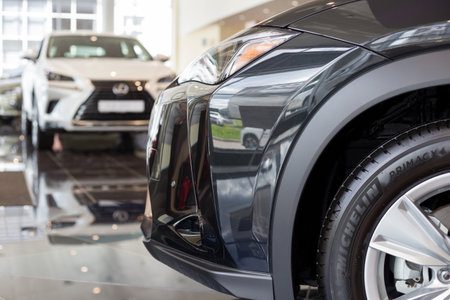1. What Is Comprehensive Coverage?
Comprehensive coverage is a type of auto insurance that helps pay for damage to your car caused by events other than a collision. While collision insurance covers accidents involving another vehicle or object, comprehensive coverage takes care of unexpected incidents that are usually out of your control.
What Does Comprehensive Coverage Protect Against?
This kind of insurance is designed to protect your car from a wide range of risks. Here’s a breakdown of what comprehensive coverage usually includes:
| Type of Incident | Is It Covered by Comprehensive? |
|---|---|
| Theft | Yes |
| Vandalism | Yes |
| Natural disasters (hail, flood, tornado, etc.) | Yes |
| Fire | Yes |
| Falling objects (like tree branches) | Yes |
| Animal damage (such as hitting a deer) | Yes |
| Collision with another car or object | No (that’s covered by Collision Insurance) |
How Is Comprehensive Different from Other Auto Insurance Types?
It’s common to confuse comprehensive coverage with other types of auto insurance. Here’s how it stacks up against the most common ones:
| Insurance Type | Main Purpose | Covers Your Car? | Covers Other Vehicles/People? |
|---|---|---|---|
| Liability Insurance | Pays for damages and injuries you cause to others in an accident. | No | Yes |
| Collision Insurance | Pays for damage to your car from an accident, regardless of fault. | Yes (accidents only) | No |
| Comprehensive Coverage | Covers non-collision-related damage to your car (theft, weather, animals). | Yes (non-accident events) | No |
Why Do People Choose Comprehensive Coverage?
If you want peace of mind knowing you’re protected against more than just accidents—like storms, theft, or even a baseball breaking your windshield—comprehensive coverage is worth considering. While it’s not required by law in most states, many lenders require it if you have a car loan or lease. This helps ensure their investment is protected until you fully own the vehicle.
2. Federal vs. State Insurance Laws
When it comes to car insurance in the United States, it’s important to understand who actually makes the rules. Many people assume there are nationwide standards set by the federal government, but in reality, most car insurance requirements—including whether you need comprehensive coverage—are determined at the state level.
How Car Insurance Is Regulated
The federal government does provide some broad guidelines and helps oversee certain aspects of insurance through agencies like the National Association of Insurance Commissioners (NAIC). However, these are mainly recommendations and do not have the force of law for individual drivers. The real power lies with each state’s government.
Key Differences: Federal Guidelines vs. State Mandates
| Federal Level | State Level | |
|---|---|---|
| Who sets the rules? | Recommends best practices, monitors industry trends | Makes and enforces laws that drivers must follow |
| Type of requirements | No direct insurance mandates for drivers | Sets minimum coverage required for vehicles (like liability) |
| Comprehensive Coverage Required? | No federal law requires it | Generally not required by states (mostly optional unless you have a loan or lease) |
Why This Matters for Drivers
This distinction means that what you’re legally required to carry can change as soon as you cross state lines. For example, while all states require some form of liability insurance, none require comprehensive coverage by law. Comprehensive insurance is usually optional unless your lender or leasing company says otherwise.
![]()
3. Is Comprehensive Coverage Legally Required?
If youre shopping for car insurance in the United States, you might wonder if comprehensive coverage is something you have to buy because of the law. Unlike liability insurance, which is required by every state, comprehensive coverage is a bit different when it comes to legal requirements.
Is Comprehensive Coverage Mandatory in Any State?
The short answer is no—no state government requires drivers to carry comprehensive insurance by law. Comprehensive coverage is considered optional under state regulations. The only time it becomes a must-have is if your lender or leasing company says so.
When Does Comprehensive Coverage Become Mandatory?
If you finance or lease your vehicle, the bank or leasing company usually wants to protect their investment. That means theyll often require you to have both collision and comprehensive coverage as part of your loan or lease agreement. This isn’t a state law—it’s a rule set by whoever owns the financial interest in your car until you’ve paid it off.
State Laws vs. Lender Requirements
| Requirement Type | Who Requires It? | Applies To |
|---|---|---|
| Liability Insurance | State Law | All Drivers (Varies by State) |
| Comprehensive Insurance | Lender/Leasing Company | Financed/Leased Cars Only |
Key Takeaways for Drivers
- If you own your car outright, comprehensive coverage is always optional.
- If you are making payments or leasing, check with your lender—they may require it.
- No U.S. state makes it illegal to drive without comprehensive insurance if your vehicle is fully paid off and owned by you.
This means you can choose whether or not to add comprehensive coverage based on your budget and how much protection you want for your car—unless your lender says otherwise.
4. When Might Lenders Require Comprehensive Coverage?
The Role of Lenders and Leaseholders
While comprehensive coverage is not required by state law, it often becomes a must-have when you finance or lease a vehicle in the United States. This is because lenders and leasing companies want to protect their investment in your car until you pay off your loan or complete your lease agreement.
Why Do Lenders Insist on Comprehensive Coverage?
When you borrow money to buy a car or sign a lease, the bank or leasing company technically owns the vehicle until youve made all your payments. If something happens to the car, such as theft, vandalism, fire, or natural disasters, they risk losing their collateral. To minimize this risk, most lenders require you to carry both collision and comprehensive insurance throughout your financing or leasing term.
Typical Insurance Requirements When Financing or Leasing
| Scenario | Required Insurance Types |
|---|---|
| Financing (Auto Loan) | Comprehensive & Collision |
| Leasing | Comprehensive & Collision (Often with low deductibles) |
| Purchased Outright (No Loan/Lease) | Only State-Mandated Minimum (e.g., Liability) |
What Happens If You Don’t Maintain Coverage?
If you drop comprehensive coverage while still owing money on your car, your lender may add “force-placed” insurance to your account. This type of insurance is usually much more expensive and may offer less protection for you personally. It’s always a good idea to keep up with the insurance requirements in your contract to avoid extra costs and complications.
Key Takeaway for U.S. Drivers
Comprehensive coverage isn’t required by law, but if you’re making payments on your car through a loan or lease, expect your lender to make it part of the deal. Always check your contract so you know exactly what’s needed!
5. Should You Opt for Comprehensive Coverage?
Understanding If Comprehensive Insurance Is Right for You
Comprehensive coverage is not required by law in most states, but that doesn’t mean it’s not important. Whether you should add it to your auto policy depends on your unique situation. Here are some key factors and scenarios to help you decide.
Common Scenarios Where Comprehensive Coverage Makes Sense
| Scenario | Why Consider Comprehensive? |
|---|---|
| Your car is new or valuable | Protects against costly repairs or replacement after theft, vandalism, or natural disasters. |
| You live in an area prone to severe weather (hail, floods, wildfires) | Covers damage from non-collision events like storms and falling objects. |
| Your neighborhood has a high rate of car theft or vandalism | Offers peace of mind if your car is at greater risk of being stolen or damaged by others. |
| You’re still paying off your car loan or lease | Lenders often require comprehensive and collision coverage until the loan is paid off. |
| You cant afford sudden major repair or replacement costs | Helps avoid financial strain after unexpected incidents not related to a crash. |
When You Might Skip Comprehensive Coverage
- Your vehicle is older and its value is low—repairs might cost more than the car is worth.
- You have enough savings to replace your car out-of-pocket if something happens.
- Your state does not mandate it and your lender doesnt require it.
Practical Tips for Decision-Making
- Calculate Your Car’s Value: Use online tools like Kelley Blue Book to estimate what your car is worth. If the annual cost of comprehensive coverage plus your deductible is more than 10% of your car’s value, it may not be worth it.
- Check Local Risks: Research crime rates and common weather hazards in your area. This can help you weigh the chances of needing comprehensive protection.
- Review Your Finances: Consider how much you could cover out-of-pocket if something happened. If a large expense would be a hardship, comprehensive might make sense.
- Read Your Loan Agreement: If you’re financing or leasing, double-check with your lender about insurance requirements before making any changes to your policy.


